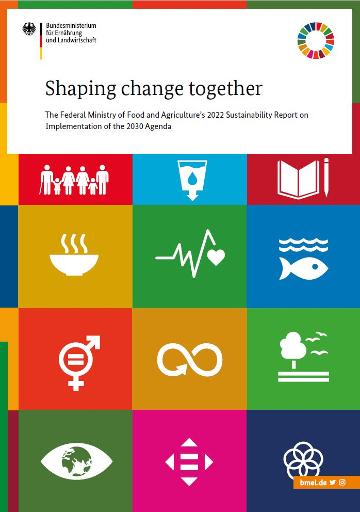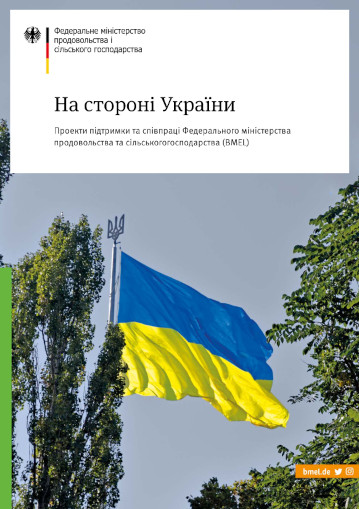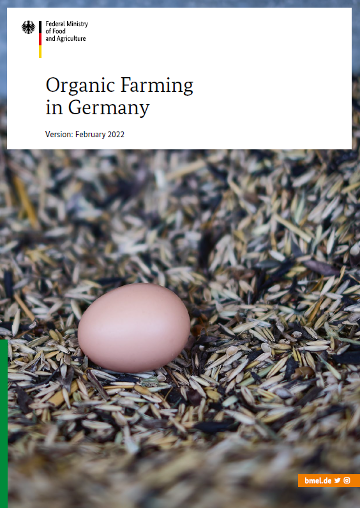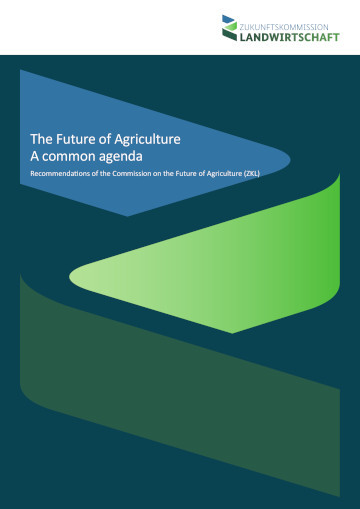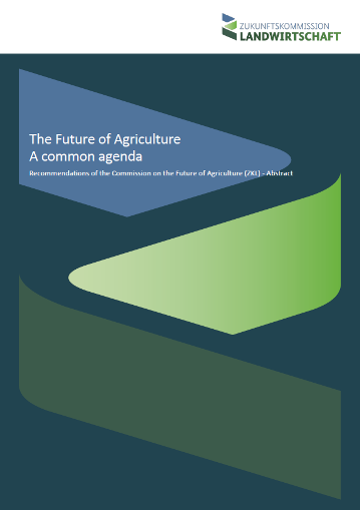From "Reports on Agriculture", Exercise number 1, May 2006
Statement on current issues related to EU finances and the EU agricultural budget
Of the Scientific Advisory Board on Agricultural Policy, Sustainable Farm Management and Rural Development at the Federal Ministry of Food, Agriculture and Consumer Protection (1)
The Advisory Board takes the current debate on the EU budget as an opportunity to comment on the overall structure of the Community budget and on the level of agricultural expenditure.
The demand voiced by various parties for a reallocation of funds at the expense of the EU agricultural budget cannot be convincingly justified by the relatively high percentage of the agricultural budget in the total budget of the EU. This high share merely indicates the relatively strong communitarisation of agricultural policy in the EU and does not say anything about the importance assumed by agricultural support at all political levels (regions, Member States, EU) in their entirety. Before shifting the financial emphases in favour of other policy fields at Community level, the Advisory Board deems it necessary to clarify which tasks are best organised at EU level and which tasks best at Member State or regional level.
With a view to the EU agricultural budget, the Advisory Board reaffirms its approval of a sweeping reform of the agricultural policy pursued by the EU. The previous steps of reform have highlighted more clearly the distribution effects of agricultural policy. The Advisory Board advises against wanting to eliminate the shortcomings in distribution policy by turning small adjusting screws in the current system. The Advisory Board also opposes a cofinancing of direct payments by national budgets. The analysis shows that direct payments can, in the long run, neither be convincingly justified in terms of income policy nor in terms of environmental policy. The Advisory Board regards the protection of legitimate expectations as the only convincing reason for the current system of direct payments. Yet, this argument cannot apply for an unlimited period. Having considered all arguments, the Advisory Board advocates a maintenance of the unanimously adopted ceiling on agricultural expenditure until 2013, on the one hand. The Advisory Board also takes the view, on the other hand, that direct payments should be cut as from 2009. After 2013, direct payments should be speedily reduced (down to a basic level, as the case may be) and the second pillar of agricultural policy should be expanded.
1) Members of the scientific advisory board: Prof. Prof. Dr. Folkhard Isermeyer (Vorsitzender, Braunschweig), Prof. Dr. Annette Otte (stv. Vorsitzende, Gießen), Prof. Dr. Stephan Dabbert (Stuttgart), Prof. Dr. Klaus Frohberg (Bonn), Prof. Dr. Ulrike Grabski-Kieron (Münster), Prof. Dr. Jörg Hartung (Hannover), Prof. Dr. Dr. h.c. Alois Heißenhuber (Freising), Prof. Dr. Jürgen Heß (Witzenhausen), Prof. Dr. Heide Inhetveen (Göttingen), Prof. Dr. Dr. h.c. mult. Ernst Kalm (Kiel), Prof. Dr. Dr. h.c. Dieter Kirschke (Berlin), Prof. Dr. Peter Michael Schmitz (Gießen), Prof. Dr. Albert Sundrum (Witzenhausen), Prof. Prof. Dr. Carsten Thoroe (Hamburg), Prof. Dr. Hannes Weindlmaier (Freising)
Long-time effects of soil preservation and soil compaction on arable land
By Edmund Isensee und Arwed Schwark, Kiel
The sound and sustainable cultivation of the soil across generations is the farmer’s aim and the reason behind the Soil Protection Act. Agricultural equipment and procedures have been developed to serve this purpose. Designed for productive efficiency, this equipment is very heavy and may cause damage to the soil. Several publications focus on this risk and ask for load restrictions. It therefore seemed appropriate to take a broad approach and practically examine whether and how far these concerns are justified and can be proven empirically. For this purpose, 17 areas with different types of production were monitored. Sub-areas cultivated in a regular way as well as frequently used tramlines and headlands were analysed selectively and comprehensively. The results were compared with wasteland – as something other than the agronomic optimum. As measuring scale for compaction, optimum and damage threshold are defined with the help of own data.
Tramlines, which are primarily compacted in the topsoil, turned out to be problematic. At sensitive locations there was deeper compaction, but only sporadically below the damage threshold.
The headlands, and there again especially the tramlines, are significantly affected as they are used frequently year after year. However, the conventionally cultivated areas are neither detrimentally compacted in the topsoil nor in the subsoil. Only the sensitive sandy soils are compacted along the tractor tyre tracks.
Possible influences from cultivation can hardly be proven. Only few areas have developed a plough sole, although not a distinct one. This is the result of modern tyre equipment and changing working depths. Soil functions did not seem to differ between conventional or organic farms. Farms with row crops, often criticised for their high degree of mechanisation, do not differ from those without row crops. Consequently, the thesis that the soil is compacted cannot be proved.
Additionally, the current results are compared with those of 1986/87. In those days, the trends and the differences between wasteland, field, tramline and headland were similar. The differences between now and then are within the scattering range of the readings.
In conclusion, it cannot be stated generally that mechanisation has led to a higher compaction of the soil. Thus, these empirical findings deviate from the relevant literature since studies in agricultural engineering are carried out on concrete objects under on-the-job conditions. The present thesis does not deal with extreme cases but with a wide spectrum of common cultivation practices.
Farm Level Analysis of Agro-Environmental Measures in Arable Farming in North Rhine-Westphalia and Rhineland-Palatinate
By Jörn Busenkell and Ernst Berg, Bonn
The research objective is to analyse the influence of agro-environmental measures offered by the considered federal states on the farm incomes on the one hand and the environmental impacts of agricultural production methods on the other hand. For this purpose, a simulation model has been developed which characterises production activities in terms of their agronomic, economic and ecological parameters which allow the derivation of overall farm performance data. Selected environmental indicators are used to assess the ecological impacts, while the economic consequences are measured by the changes of farm income and its respective variance. Site-specific yield functions depending on nitrogen and pesticide use form the basis of these calculations.
The economic and ecological outcomes resulting from participation in the various programmes are computed using model farms from different locations in the respective federal states. The participation in the programme “non-use of chemical-synthetic fertilisers and pesticides” in North Rhine-Westphalia requires significant adjustments with respect to crop rotation, production methods and intensity as well as workload. They consequently result in considerable income losses which are not completely offset by the compensatory payments. The measure “planting of field margins” has only marginal influence on the farm income, since only a small portion of the land is affected. An income improvement is possible by way of participating in erosion control measures, yet at the expense of an increasing variance of income. The policy measures to support the extensification of arable farming have in part resulted in a significant reduction in input use, thus improving the ecological indicators and causing favourable premium-effect relations. Erosion control programmes reduce the potential soil degradation. In the state of Rhineland-Palatinate, participation in agro-environmental programmes generally requires fewer adjustments than in North Rhine-Westphalia. Particularly farms in less favoured areas of Rhineland-Palatinate can therefore realise considerable increases in income by participating in the “eco-friendly arable farming” programme. However, the improvements of the ecological indicators that were achieved are only moderate. The consequences of the implementation of the “field periphery programme” are similar to those of the respective programme in North Rhine-Westphalia.
Resource efficiency as a regulation variable for the promotion of sustainable production systems: Are there priority areas for organic farming?
By Friedhelm Taube, Michael Kelm, Ralf Loges, Kiel and Michael Wachendorf, Kassel
So far, the promotion of organic farming through additional premiums, as well as the coupling of direct payments with environmental standards for all agricultural enterprises (cross-compliance), has not been based on scientifically based indicator values. It is proposed that this should be done by means of a cost-benefit-analysis, taking into account both economic and environmental criteria. Economic incentives for conversion to organic farming and environmentally sound farming practices should be highest in regions where conventional intensive agriculture causes significant environmental damage without providing significantly higher yield levels than organic farming. In contrast, incentives for conversion should be lower in areas which are not environmentally sensitive, but promote significantly higher yield levels under conventional than under organic farming practices.
The protection of biotic resources has already been incorporated into the regional planning targets in some German federal states ("Priority areas for nature protection"). Extending this concept to the agricultural sector, "priority areas for organic farming" can be formulated which aim primarily at the protection of abiotic resources.
The application of this concept has been demonstrated by linking scientific data from test farms under different soil, climatic and management conditions with statistical data on soil fertility, livestock density and land use within the entire state. It could be demonstrated that a conversion of specialized dairy farms on sandy soils from highly intensive conventional practices to organic standards significantly reduced nitrate inputs into groundwater with only a slight reduction in forage yields. In contrast, nitrate leaching in both conventional and organic arable farming was low on loamy soils which are predestined for arable crop production, but grain yields were by far lower in organic farming.
This means that a shift from highly intensive agriculture towards organic or extensified farming systems, respectively, should be regarded as most efficient in dairy farming regions located on sandy soils, and in environmentally sensitive areas with vulnerable groundwater such as low moors. Aggregated indicators of resource use, which can be defined according to the proposed scheme, as well as economic aspects should be part of political decisions.
Options to improve the competitive position of the domestic agricultural sector
By Hendrik Berendson, Dorsten, Hans-Ulrich Hensch and Christiane Wildraut, Soest
The economic environment of the food industry is increasingly worsening with severe consequences for the agricultural sector as well. Hence, it is necessary to point out ways to strengthen the competitive position of domestic farmers as suppliers of the food-processing industry. One option is the targeted orientation of agricultural production to the specific demands of the producing food industry. In line with this purpose, an empiric research project focuses on the procurement management of the downstream processing stage. CEOs and purchasing managers of more than 20 fruit and vegetable processing companies located in the federal state of North Rhine-Westphalia have been interviewed, supplemented by talks with market experts and managers from other sectors. As a result, certain criteria can be identified that are used by processors to assess and select suppliers beyond company-specific requirements. Moreover, recommendations can be derived that show ways of improving the collaboration between the two stages. These recommendations are directed at farmers as market partners of the processors as well as at policy-makers.
Direct payments from a social policy perspective, taking the example of Swiss agriculture
By Stefan Mann, Ettenhausen
In social sciences, there is a broad consensus that the existence of working households below the poverty line (“working poor”) is an unwanted phenomenon. Taking Swiss agriculture as an example, the many cases of working poor households is set in relation to the agricultural policy instrument of direct payments. It is suggested to replace land-related direct payments by two new instruments, i.e. a negative tax transfer to working poor farming households and extra transfers for today’s farmers on social policy grounds for which future farmers will not be eligible. In the medium term, the latter principle of dynamic differentiation would lead to a socially viable form of structural change.
An Assessment of the Implications and Challenges of the Accession of Turkey to the EU for Agricultural Policy and Farming
By Andreas Schmidt, Hummeltal
In the discussion about the EU accession of Turkey the financial consequences for the EU are, besides the cultural dimension, considered as particularly challenging. The expenditure on the Common Agricultural Policy (CAP) still accounts for the largest proportion of the EU budget. Furthermore, the Turkish agricultural sector is huge and yet, compared to that of the EU, at a low level of development. Consequently, this policy area in particular is seen as potentially pushing up costs. A number of studies on this topic have been conducted and these are the main focus of this contribution. Apart from the presentation of different approaches and cost estimates, an assessment has been carried out which suggests that the costs of enlargement for the CAP do not warrant any alarmism. Due to the long time-frame until accession and probable changes in the structures of Turkish agriculture and the entire economy, as well as further CAP reforms in the EU and other factors, the level of transfer payments within the framework of CAP at the time of accession will be controllable.
Apart from the financial questions other challenges, primarily for the Turkish agricultural sector, have been taken into consideration. Integration necessitates, the far-reaching adaptation of Turkey, which will require major investment. Alongside the stringent requirements in the area of animal and plant health, food safety and border controls, efficient management of structural changes is needed. Thus, it is imperative to prepare a strategy for rural and agricultural development today that is directed towards EU integration.
Short Rotation Coppice – Opportunities for more Income in Rural Areas?
By Gregor Pallast, Thomas Breuer and Karin Holm-Müller, Bonn
Based on previous experience with the cultivation of short rotating coppice in Germany, the present article deals with the options of commercial use and profitability of tree plantations for bio-energy generation. The production is divided into several steps in order to juxtapose the resultant production costs with the potential revenues of possible customers. As the cultivation of short rotating coppice in Germany is still in its experimental stage, the focus of this article is on the comparison of different production processes as well as on a critical evaluation of the available data base.
The results show that – leaving aside any government aid – large-scale cultivation can approximate profitability only if very optimistic assumptions are entertained. Considering the necessary long-term transaction-specific investments, financial aids may not be as important as securing a stable economic environment with guaranteed availability of inputs to energy producers as well as sales to plantation owners.





